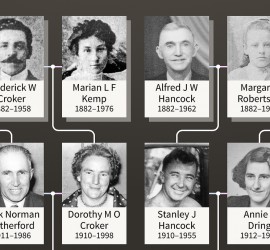I’ve recently started a journey of using DNA to further my family tree research. I have an extensive paper trail family tree from many years of research, but I was really interested in what science could offer in terms of using a DNA test to find cousins and confirm who […]
ancestry
2 posts
I started researching my family tree many years ago – helped out considerably by two uncles, one on either side of the family. Over the years I have dipped in and out of research, but the family tree has never been far from my mind. My tree is split between Scotland, England […]
